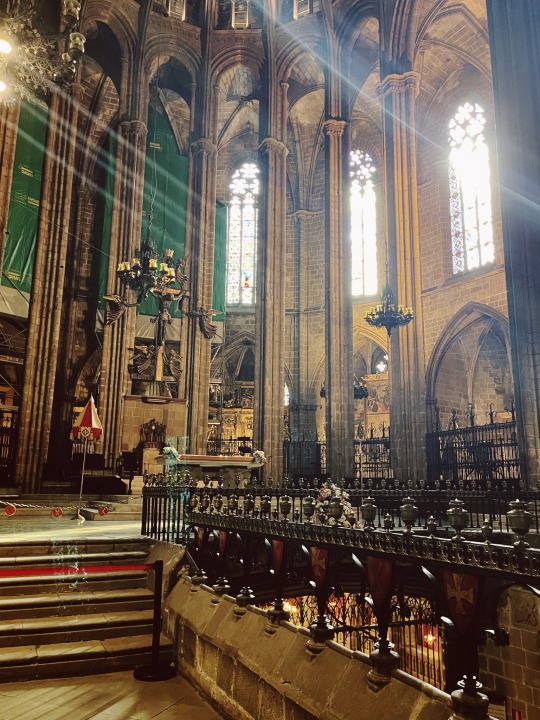#ciutat vella
Photo
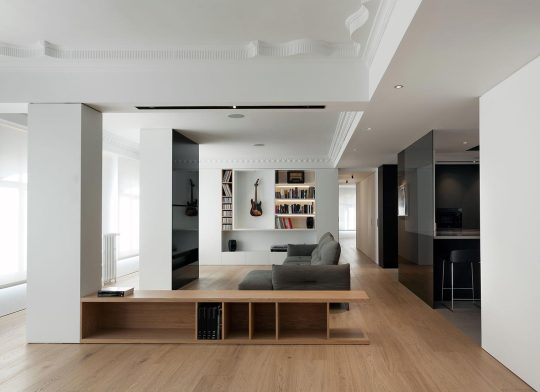


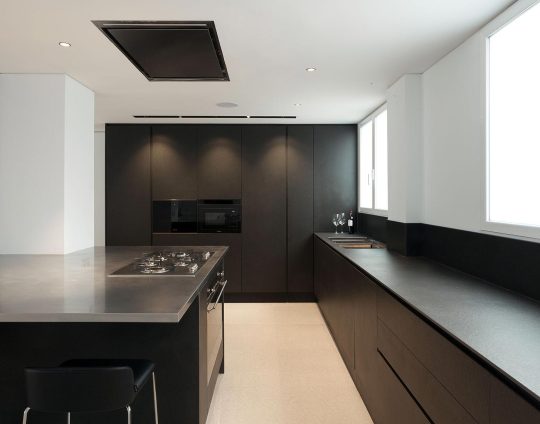

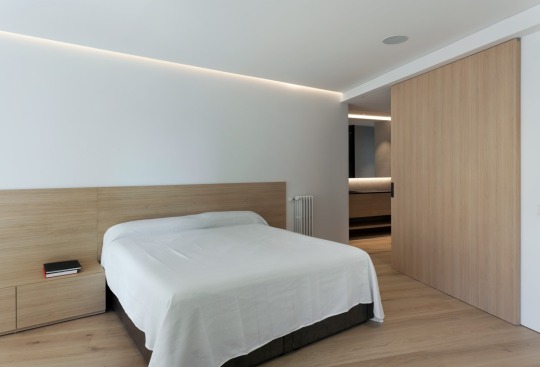
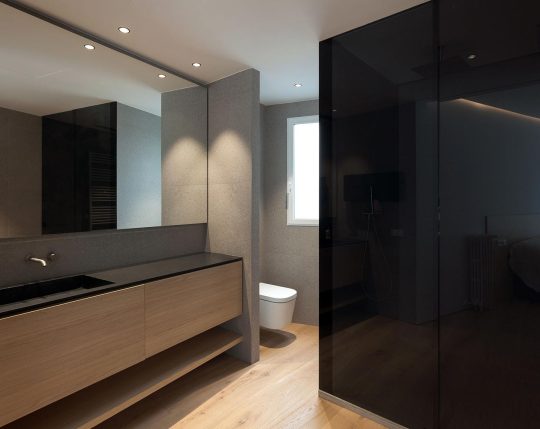
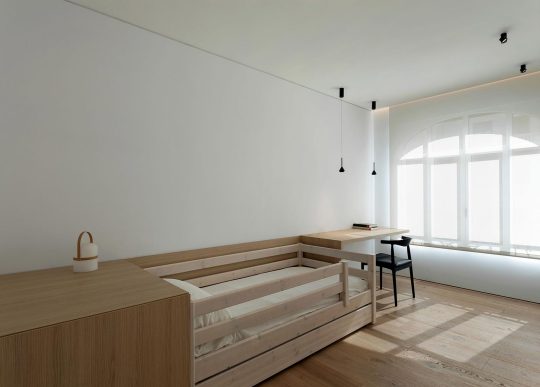
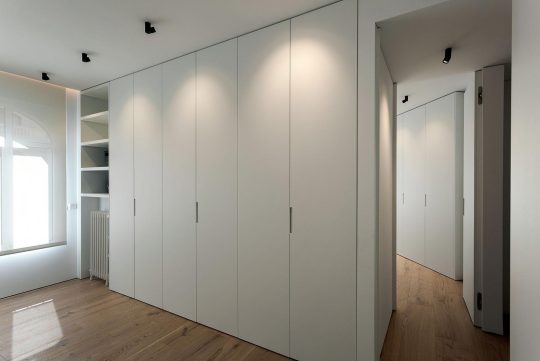
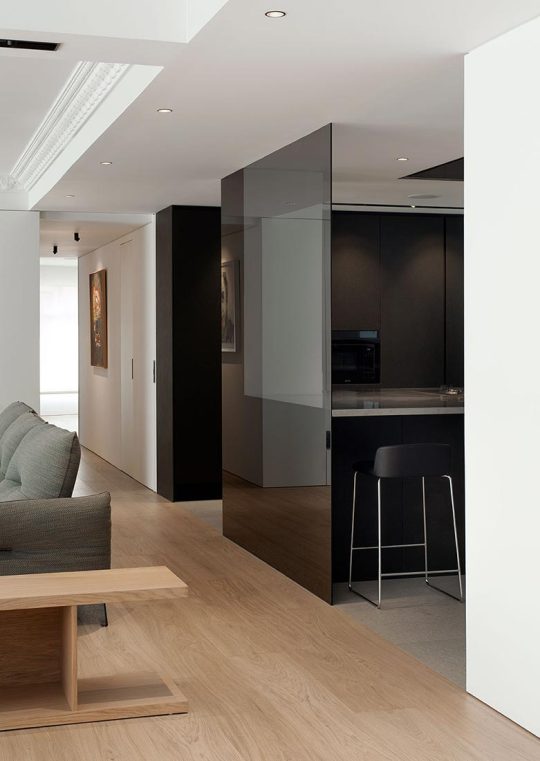
Casa BM, Ciutat Vella district, Valencia, Spain,
Olmos Estudio
#art#design#architecture#interiors#interiordesign#valencia#spain#casa#casabm#ciutat vella#olmos estudio#minimalisy
137 notes
·
View notes
Text
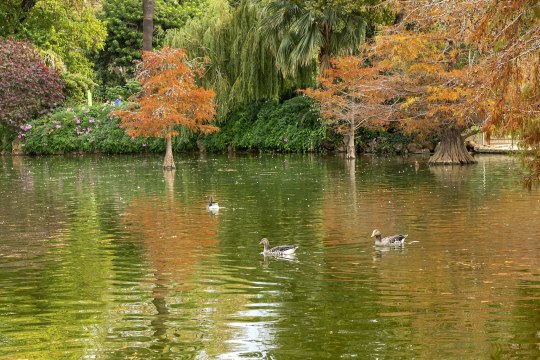
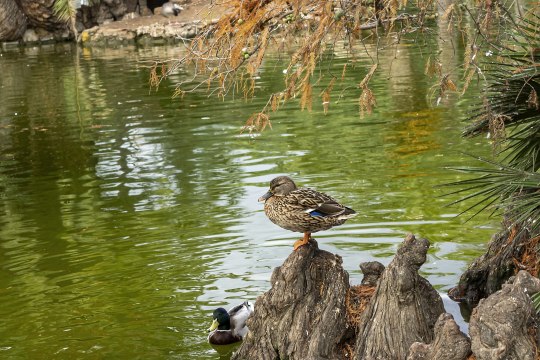
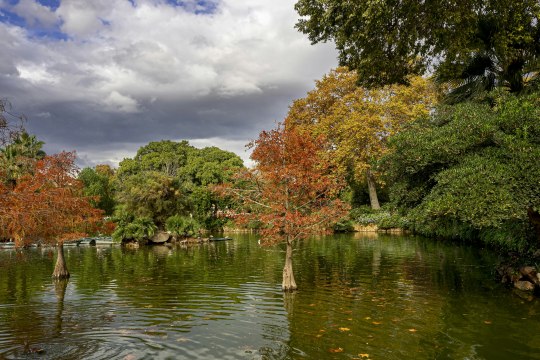
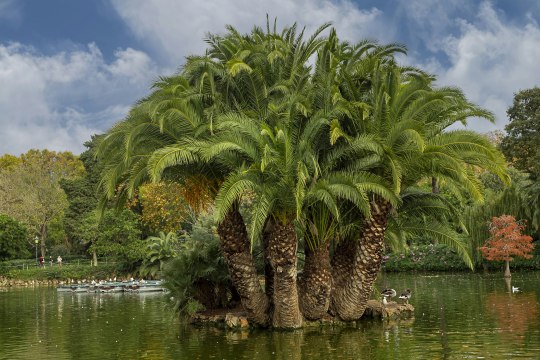
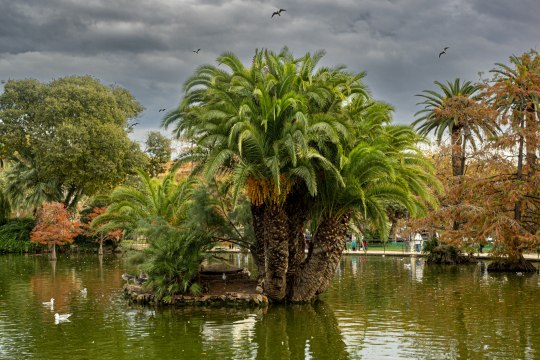
Ciutadella Park, Ciutat Vella, Barcelona, Catalonia, Spain
Manuel Torres Garcia
0 notes
Video
Old street lamp by Joan López i Casanoves
#night photography#night#Old Town#Ciutat Vella#La Ribera#Sant Pere#Santa Caterina i la Ribera#Gothic Quarter#Barri Gòtic#monochrome#b&w#black&white#black and white#showcases#showcase#balconies#doors#windows#flats#buildings#fences#lampposts#lanterns#traffic lights#bicycles#pavement#asphalt#sidewalks#pedestrians#cyclist
0 notes
Text

Josep Goday i Casals (Spanish, 1881-1936)
Jaume Torres i Grau (Spanish, 1879-1945)
Edifici de Correus, 1927
Ciutat Vella, Barcelona, Catalunya
#Josep Goday i Casals#Jaume Torres i Grau#edifici de correus#art#fine art#classical art#european art#europe#european#fine arts#europa#mediterranean#sculpture#putti#puttos#cherubs#cherub#western civilization#arts#crown#royal#1800s
158 notes
·
View notes
Text
The growth of Barcelona between the years 1823 and 2010.
The red is the built area, black is water (the Mediterranean sea and the Besòs river), and in different shades of gray they represent elevation (white is the flatter surface, and the darker parts are more elevated, in the Collserola and Montjuïc mountains) as well as the old city walls. GIF from Històries de Barcelona.
Barcelona had had basically the same perimeter since the 14th century until the 1850s (what you can see at the beginning of the video). How is it possible that it remained the same for so many centuries -including the beginning of the Industrial Revolution with its urban population boom!- and then suddenly exploded the way it did? As with many things in this city's history, it has to do with the Spanish army.

This is was Barcelona's surface for all those centuries (for those familiar with the city, what nowadays is Ciutat Vella). As you can see, it's inside the city walls (built in the Middle Ages, reinforced with bastions in the Early Modern period).
But in 1703-1714, we have the War of the Spanish Succession, where Castile (Spain) occupies Catalonia and the Bourbon dynasty become kings, and by right of conquest they abolish Catalonia's independence (as well as the Kingdom of València, Mallorca and Aragon, who suffer the same fate, but I will focus on Catalonia in this post because it's what explains Barcelona's weird growth). Catalonia becomes ruled by a military governor chosen by the king from Castile and a huge repression starts against Catalan people, prohibiting the use of the Catalan language in official settings, banning Catalan people from holding office (only Castilians could), forcing families to host invading soldiers in their homes, forcing every town to dedicate a percentage of their fields to feeding the Spanish army and their horses, and a very long etc.
Oh, and they forced 42% of the city's inhabitants (17% of Barcelona's built surface) to destroy their own homes so that Spain could built a huge military citadel to bomb the city from, right where Barcelona's most economically active and most populated neighbourhood (la Ribera) stood.
Barcelona is Catalonia's capital city, and Barcelonians have always been known for their rebellious spirit. The new Bourbon king made sure to turn Barcelona into a completely militarized city, with a strong presence of the army in every corner of the city. There are 2 military buildings right outside the city that answer our question:

On the North, the huge Citadel. On the South, the Montjuïc castle. Then, the Spanish king made the law that nothing could be built outside of the city walls. The reason? They wanted to be able to bomb any place in the city. They could reach the whole city from these two military points, and they didn't want any building outside that they couldn't easily destroy.
The Citadel was demolished in 1868 after a revolution (that's a story for another day), but the Montjuïc castle still exists, standing on top of the hill that overlooks the city:
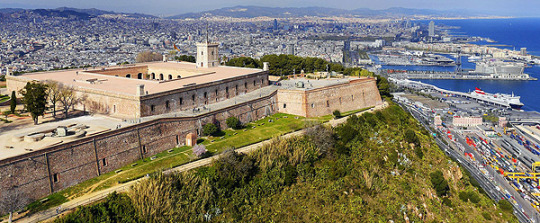

Anyway, this decision to not allow Barcelona to grow had horrible consequences for its population. In the late 1700s, Barcelona's population was quickly growing because many people from the countryside were moving in to work in its proto-industry. The city could only grow inwards: all the space was filled (say bye to the fields and vegetable gardens that used to be common in the city), the buildings built more storeys taller in cheap material to accommodate more people quickly, houses were divided to rent every floor or room separately, and housing became much more expensive and became treated like a product to make money off. Many families didn't have sunlight nor good air ventilation, with important repercussions in people's health.
The population continued growing, particularly with the Industrial Revolution, when even more people moved into the cities to work in factories. The situation was absolutely unsustainable, so it's no surprise that riots started throughout the 1800s to tear down the walls. However, every time, the Spanish government answered with a strong repression of the people who were destroying the walls and forced them to build them back.
Barcelonians finally made it in summer 1854, when the cholera epidemic worsened at the same time that the 2-year long progressive government started in Spain, which saw tearing down the walls as the only way to settle the constant social uprisings in Barcelona.
In 1859, the Eixample expansion was started to build outside the old city walls, according to the Cerdà plan (the egalitarian urbanism plan, a story for another day). Finally, the city could grow as much as it needed to make room for its inhabitants in dignified houses. And during the late 1800s and throughout the 1900s, Barcelona has been the destination of many waves of immigration, so it has continued growing. Now, it has reached all its growth: there is no space left, with the Mediterranean sea on the East, the Collserola mountains on the West, and already highly-populated cities at the North and South. Barcelona has reached its full possible expansion.
#barcelona#catalunya#història#mapes#urban#europe#history#1800s#1900s#urbanism#maps#war of the spanish succession#guerra de successió#catalonia#1714#european history#spain
31 notes
·
View notes
Text
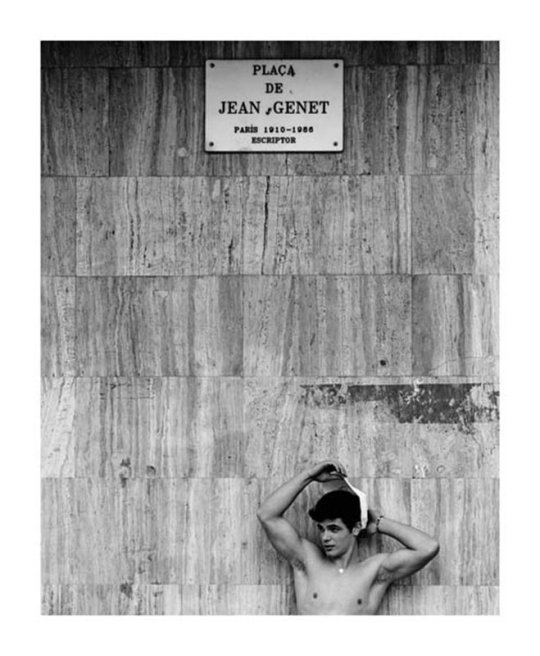
Photography by Daniel Riera
Plaça de Jean Genet is a small, triangle-shaped square in Barcelona. It's located in the southern side of El Raval, by the port and Avinguda de les Drassanes and the Catalan Gothic buildings of the Royal Shipyard, in the district of Ciutat Vella. It is named after French author Jean Genet who resided in the city for a time and whose novel The Thief's Journal takes place in the poverty-stricken alleys of Raval. Essayist Lluís Permanyer proposed the name in 1997.

#jean genet#plaça de jean genet#barcelona#daniel riera#el raval#raval#lluís permanyer#the thief's journal
9 notes
·
View notes
Note
here are some barcelona recs from someone who lives there, other than things barça related:
- the beach, especially in the mornings or during sunset
- for a pretty view of the whole city: tibidabo/temple expiatori del sagrat cor, túro de la rovira, mirador del nen de la rutlla, mirador de l'alcalde, MNAC
- shopping: passeig de gràcia, portal de l'angel/ciutat vella - try to avoid la rambla if you can
- if you like gardens: teatre grec/jardins de laribal, jardí botànic de barcelona, parc del laberint d'horta, parc de la ciutadella (+ hivernacle del parc de la ciutadella, a greenhouse in the park)
- for architecture/pretty things: parc güell, casa batlló, la perdrera, casa vincens gaudí, sagrada família (most people take their pictures in plaça de gaudí), recinte modernista de sant pau, arc de triomf, catedral de barcelona, el pont del bisbe, el mural del petó, palau de la música catalana, plaça reial
- food is very personal so just some general things: if you want to go to mercat de la boqueria, mercat de santa caterina is a better option with less tourists, try not to go to restaurants in the very busy and touristy streets, trust me the quality is bad, if you want to eat paella, eat it for lunch (it's not supposed to be a dinner food) at a specialized rice restaurant, and be prepared to eat dinner after 8/9PM haha
i didn't expect this to get this long, but here you go 😂
Don't mind me, gonna go ahead and jolt all of this down 😅
11 notes
·
View notes
Photo

Somos tus cerrajeros en todos los barrios de #valencia Cabañal, Cañamelar, Camí de Vera, Camí Fondo, Camí Real, Camins al Grau, Campanar, Castellar-Oliveral, Ciudad de las Artes y las Ciencias, Ciutat Fallera, Ciutat Jardí, Ciutat Universitària, Ciutat Vella, El Botànic, El Grao, El Mercat, El Pilar, El Pla del Real, El Pla del Remei, Els Orriols, En Corts, Exposició. Extramurs, Faitanar, Favara, Fuente de San Luis, Horno de Alcedo, La Bega Baixa, La Carrasca, La Creu Coberta, La Creu del Grau, La Fuensanta, La Petxina, La Punta, La Raiosa, La Roqueta, La Saïdia, La Seu, La Torre, La Xerea, L'Amistat, Les Tendetes, L'Hort de Senabre, L'Illa Perduda, L'Olivereta #ciutatuniversitariavalencia #ciutatvellavalencia #elbotanicvalencia #elgraovalencia #elmercatvalencia #elpilarvalencia #elpladelrealvalencia Benifaraig, Beniferri, Benimaclet, Benimámet, Beteró, Borbotó #elpladelremeivalencia #elsorriolsvalencia #encortsvalencia #exposiciovalencia #extramursvalencia https://rapidtecnic.com #valencia #cerrajeros #persianeros #serrallers #locksmiths (en Cerrajeros Valencia 603 908 603 Persianas Metálicas) https://www.instagram.com/p/CqSNQGXosm6/?igshid=NGJjMDIxMWI=
#valencia#ciutatuniversitariavalencia#ciutatvellavalencia#elbotanicvalencia#elgraovalencia#elmercatvalencia#elpilarvalencia#elpladelrealvalencia#elpladelremeivalencia#elsorriolsvalencia#encortsvalencia#exposiciovalencia#extramursvalencia#cerrajeros#persianeros#serrallers#locksmiths
8 notes
·
View notes
Text

Hi everyone! Today I did some research on Valencia. The city centre is a very old one. They call it "Ciutat Vella". Valencia was founded by the Romans in 138 BC with the name "Valentia". You can still see some ruins from Roman times and the Visigoths in la plaza de la Almoina. I can't wait to see this city in real life and taste the traditional paella in their local restaurants.
2 notes
·
View notes
Photo

CASA AVE 7 - #Reforma y diseño #interior de #vivienda en Ciutat Vella, #Valencia La zona donde se sitúa la actual #cocina es el espacio que hemos diseñado con más cuidado ya que tenía que convertirse en el nexo de unión entre los #espacios nuevos y los espacios originales de la vivienda Arquitectura @dg_arquitecto_estudio Construye @at4_grupo Carpintería @m_madentia Iluminación @arkoslight Suelo madera @schottenwood Fotografía @fotografadearquitectura #interiordesign #interiorismo #mediterranean #classicarchitecture #the_best_new_architects #archidaily #architexture #architectural #déco #deco #decoración #decohome #interior4all #dgestudio #arquitectovalencia #home #homesweethome #white #light #lighting #kitchen_design @mobalco.vlc #architecturesight (en Valencia) https://www.instagram.com/p/Cn3rNjHO9TW/?igshid=NGJjMDIxMWI=
#reforma#interior#vivienda#valencia#cocina#espacios#interiordesign#interiorismo#mediterranean#classicarchitecture#the_best_new_architects#archidaily#architexture#architectural#déco#deco#decoración#decohome#interior4all#dgestudio#arquitectovalencia#home#homesweethome#white#light#lighting#kitchen_design#architecturesight
4 notes
·
View notes
Text
¿Comemos paella en la Barceloneta?
Con una Puntuación de 4,4 y comentarios como: "Paellas como en tu casa con un servicio de 10!!"
MANÀ 75. (Pg. de Joan de Borbó, 101, Ciutat Vella, 08039 BCN)
Se encuentra en un rinconcito de la Barceloneta.
Nos promete que será una experiencia que deleite nuestros sentidos a través de los aromas.
Le damos una oportunidad ??
0 notes
Text
MI TOP 5
algunos restaurantes/bars/ café shop en Valencia
Casa Raíz, localizado en Russafa. Comida: 6/10, Precio: 8/10, Atmósfera: 8/10,Locación: 8/10. Aunque la comida es standard, que se puede buscar en todos los cafés, lo que me gusta de este sitio es el ambience, todo muy limpio, 70s vibe, minimalist con un patio que te da el impresión que estás en vacación. Nota general: 7,5.
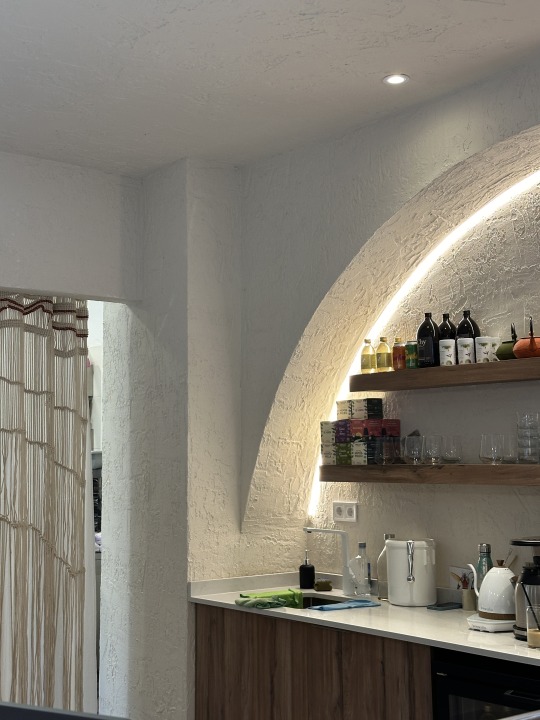
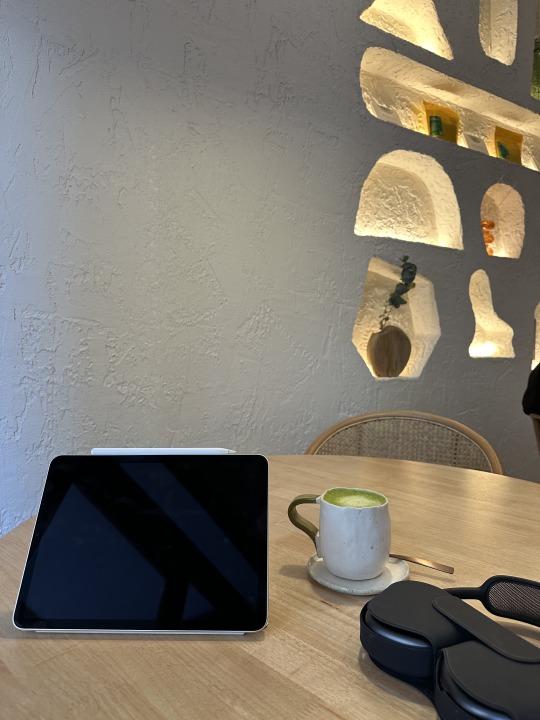
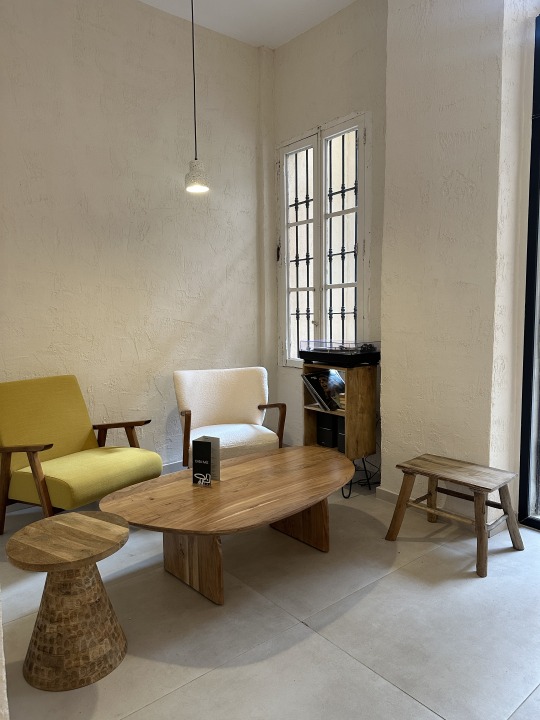
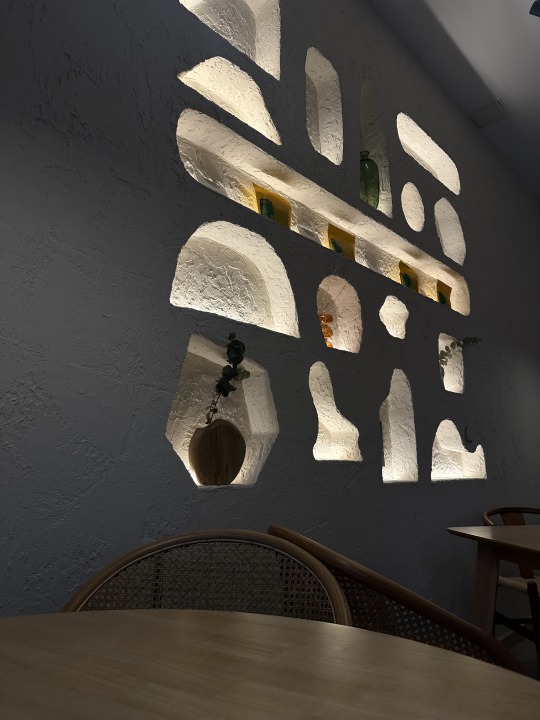
2. Bluebell Café, localizado en Russafa. Comida: 8/10, Precio: 7/10, Atmósfera: 7/10, Locación: 8/10. Cuando entras en Bluebell, vas a tener el impression que estás entrando en casa de tu abuela, el jardín con los flores, me han recordado mucho el jardín de mi abuela en Cerdeña. Mayor de la gente que va a comer aquí, son estudiantes o extranjeros. Cuando fui, he probado un toast con queso, frutas, nueces y miel, y fue unos de los platos que me voy a recordar siempre. Nota general: 7,5.
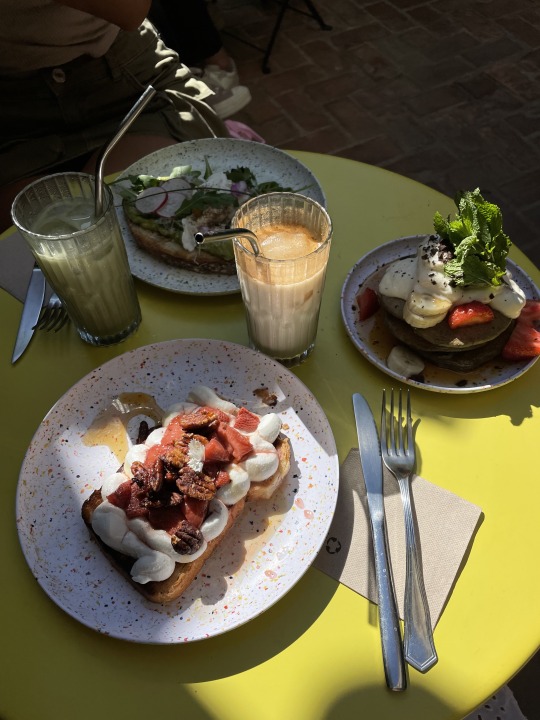

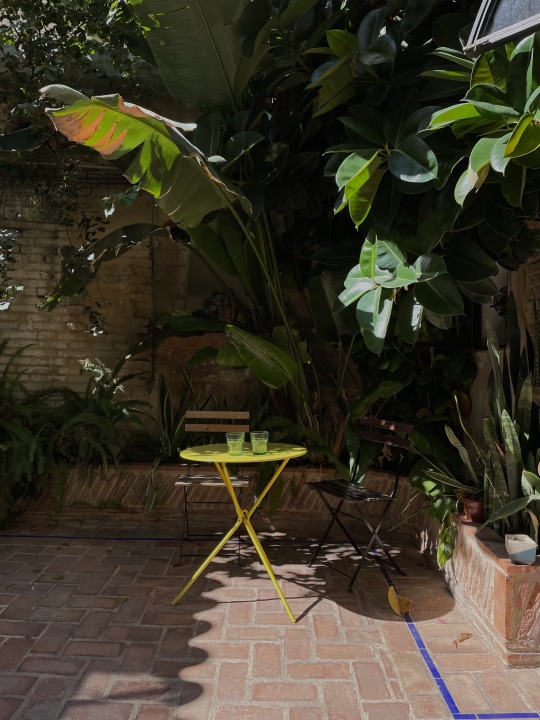
3. Juliet, localizado en Ciutat Vella. Comidá: 8/10, Precio: 8/10, Atmósfera: 7.5/10, Location: 7/10. Uno de mis top 3 sitios en Valencia, ahí puedes encontrar galletas muy deliciosas, hay de todo, frambuesa y chocolate blanco, galletas de kinder bueno, lotus, todo lo que puedes imaginar. Debo decir pero que, Juliet es una empresa empezada de estudiantes, entonces en ese momento todo es un poquito sin orden. Pero creo que poco a poco van a construir algo bueno. Nota general: 7,5.



4. Atenea Skybar, localizado en Plaza del Ayuntamiento. Comida: 5/10, Precio: 7/10, Atmósfera: 9/10, Locación: 9/10. La terraza más popular de Valencia y la más conocida, se encuentra en el centro de la ciudad. Aunque tienes que pagar €8 de entrada y las copas de cócteles son €12 cada una, debo decir que Atenea tiene la mejor vista del centro de Valencia. Nota general: 7.
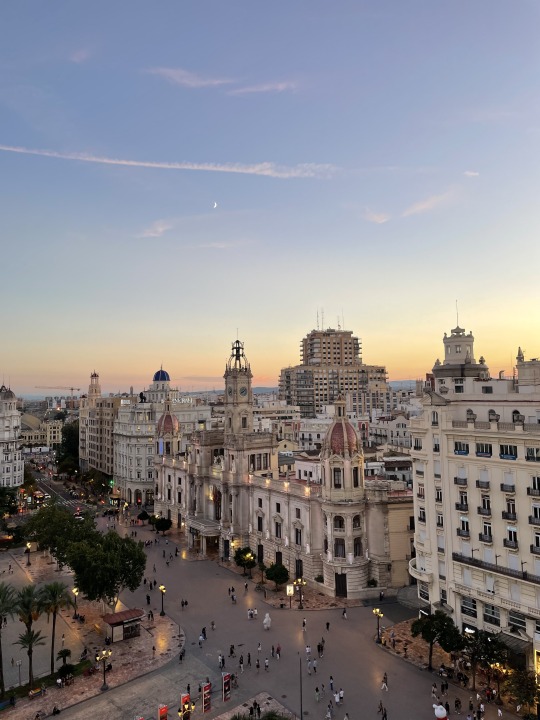
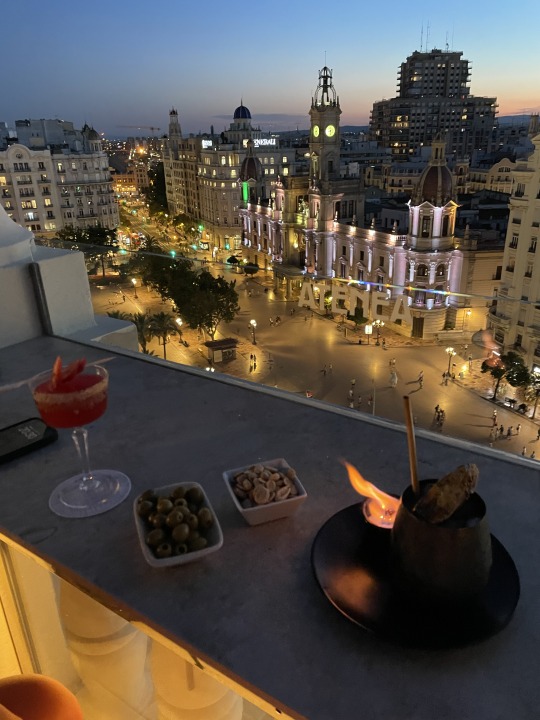

5. Voltereta Bali, localizado en Eixample. Comida: 9/10, Precio: 9/10, Atmósfera: 9/10, Locación: 8/10. Mi lugar favorito, todo muy bueno, barato y mi estilo de restaurante. Tiene inspiración a el lugar Bali, cuando entras, ya puedes leer la historia que el sitio te está contando. Lo que me gusta más de este sitio son los detalles en todo. Nota general: 8,5.

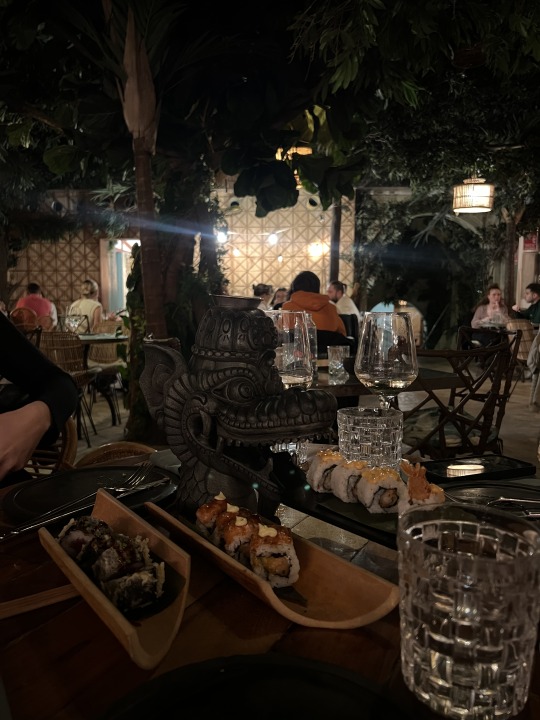
0 notes
Text
0 notes
Text
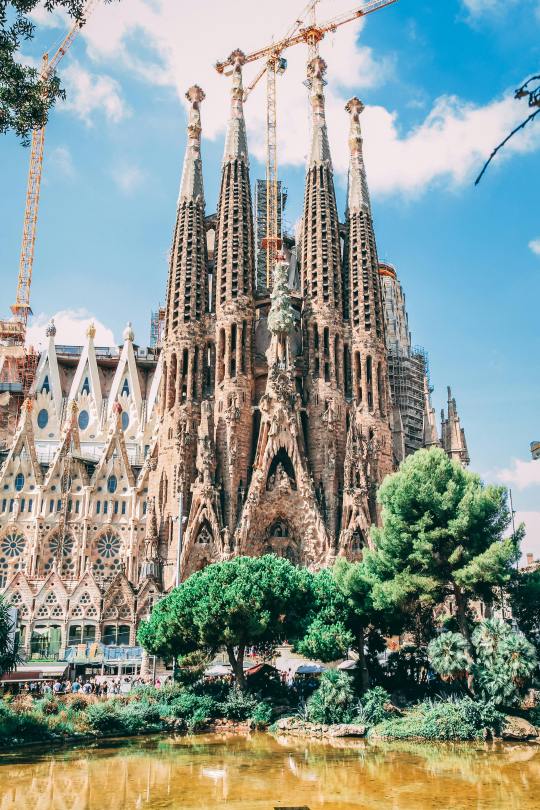
0 notes

